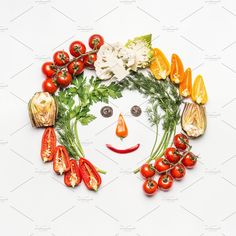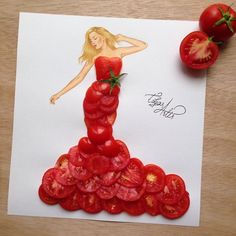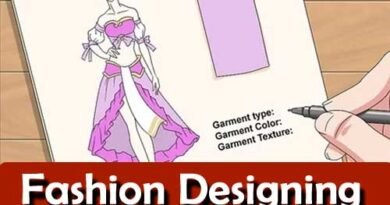Vegetable Impression 02
Vegetable impression art, commonly known as vegetable printing or stamping, is a captivating form of artistic expression that utilizes fresh vegetables to create beautiful, intricate designs. This innovative technique not only celebrates the beauty of natural materials but also fosters creativity, environmental awareness, and educational opportunities. In this article, we will explore the history, techniques, benefits, and applications of vegetable impression art, showcasing its significance in both the artistic community and educational settings.

Historical Background
Origins and Evolution
The use of natural materials for artistic purposes dates back thousands of years. Ancient cultures around the world employed plants, vegetables, and other organic materials for various forms of art, including dyeing textiles and decorating pottery. While the exact origins of vegetable printing as we recognize it today are less documented, the practice likely evolved from these early artistic endeavors.
In the mid-20th century, a revival of interest in eco-friendly and sustainable art practices led to the popularization of vegetable printing. Artists began experimenting with vegetables, discovering their potential to create intricate patterns and vibrant colors. This movement paralleled a growing awareness of environmental issues, encouraging artists and hobbyists to explore sustainable materials in their work.
Techniques and Materials
Selecting Vegetables
The first step in vegetable impression art is choosing the right vegetables. Different vegetables yield distinct textures and shapes, allowing for a variety of artistic effects. Some popular choices include:
- Potatoes: Often halved or carved into specific shapes, potatoes create bold and clear impressions.
- Carrots: Sliced into rounds or carved, carrots produce detailed patterns and textures.
- Celery: The base of celery can create beautiful floral designs.
- Bell Peppers: When cut in half, they create star-shaped impressions that add visual interest.
- Okra: The cross-section of okra produces unique star-like prints.
Preparing the Vegetables

- Cutting: Begin by cutting the vegetables to expose their inner texture. The way they are cut will influence the design created.
- Inking: Use natural or fabric paints, inks, or dyes to apply color to the vegetable surface. Water-based paints are particularly effective for printing on paper or fabric.
- Stamping: Dip the inked vegetable onto the desired surface, such as paper, canvas, or fabric, ensuring even pressure for a clear impression.
The Printing Process
- Surface Preparation: Make sure the chosen surface is clean and dry. For fabric, pre-washing is recommended to remove any chemicals.
- Application: Dip the cut vegetable into the paint, ensuring an even coating. Press it firmly onto the surface and lift it straight up to avoid smudging.
- Layering: To create more complex designs, layer different vegetable stamps. This technique allows for an interplay of colors and shapes.
- Drying: Allow the printed material to dry completely before handling or using it further.
Benefits of Vegetable Impressions
Encouraging Creativity
Vegetable impression art is an excellent medium for creative expression. The spontaneity of the process invites experimentation, encouraging artists to explore colors, shapes, and patterns. Each print can yield unexpected results, making the experience both engaging and rewarding.
Promoting Environmental Awareness
Utilizing natural materials for art emphasizes the importance of sustainability. Vegetable printing highlights the beauty and versatility of vegetables, promoting a message of environmental consciousness. It encourages artists and participants to consider the ecological impact of their choices while inspiring them to reduce waste by using items that might otherwise be discarded.
Educational Opportunities
Vegetable printing serves as an effective educational tool across various settings. It can be used to teach:
- Botany: Understanding plant anatomy and the diversity of vegetables.
- Color Theory: Experimenting with mixing colors and creating new shades.
- Art Techniques: Learning about printing methods, texture, and design principles.
Therapeutic Benefits
Engaging in creative activities like vegetable printing has therapeutic effects. The tactile experience of handling fresh vegetables and the joy of creating can help reduce stress and promote relaxation. This makes vegetable printing a popular choice in art therapy, allowing individuals to express their emotions and find calm through creativity.
Applications of Vegetable Impressions
Art and Craft

Vegetable impressions can be applied in various artistic contexts, including:
- Textile Design: Creating unique patterns on fabrics for clothing, home decor, and accessories.
- Printmaking: Incorporating vegetable prints into larger mixed-media artworks, adding depth and texture.
- Stationery: Designing greeting cards, invitations, and decorative paper featuring original prints.
Educational Settings
In educational environments, vegetable printing can be integrated into lessons about nature, art, and science. It provides a hands-on activity for students, allowing them to learn about the life cycle of plants, the significance of sustainability, and the fundamentals of printmaking.
Community Engagement
Workshops centered around vegetable printing can be organized in community centers, festivals, or local art events. These workshops promote collaboration and creativity among participants, fostering a sense of community while encouraging artistic expression.
Conclusion
Vegetable impression art is a delightful and enriching practice that blends creativity with environmental consciousness. Its ability to produce visually stunning results while fostering appreciation for nature makes it a valuable artistic endeavor. Whether used for personal expression, education, or community engagement, vegetable printing invites individuals to explore their creativity while celebrating the beauty of the natural world. As artists continue to innovate and experiment, vegetable impression art will remain a vibrant and meaningful form of expression, inspiring people of all ages to engage with both art and nature. Through this unique art form, we can deepen our understanding of the interconnectedness of creativity, sustainability, and the environment, making it a truly rewarding pursuit.
